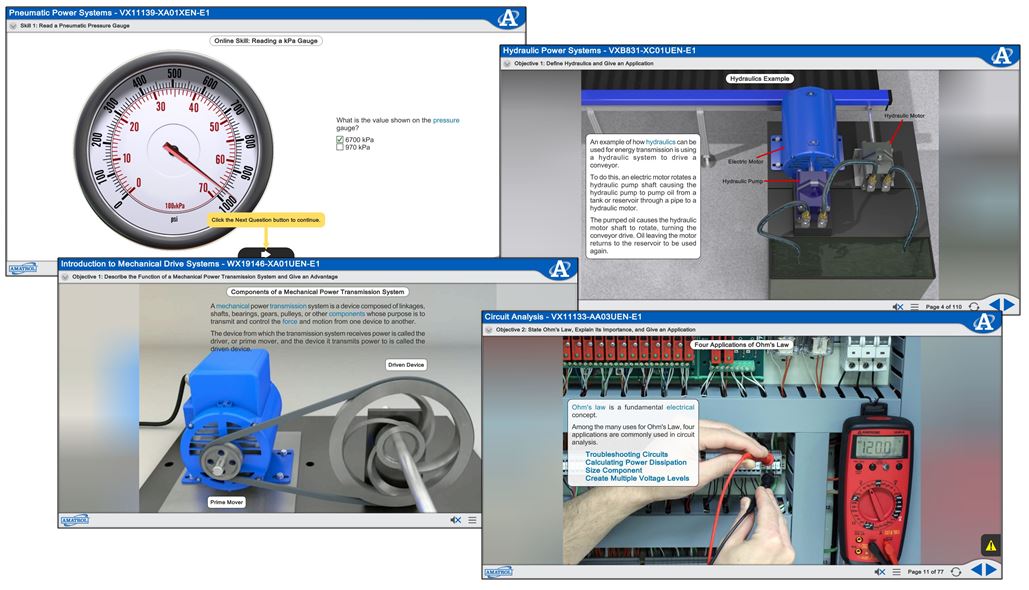
Amatrol’s Industrial Maintenance Technology (IMT) training program is a series of eLearning courses arranged into segments to best prepare industrial maintenance technicians for the career opportunities in industry. These areas begin with absolute basics of industry like basic maintenance operations and basic mechanical, hydraulic, pneumatics, and electrical skills before moving on to process control, electronic control, welding, and piping.
These courses use Amatrol’s world-class interactive multimedia featuring dynamic problem-solving interactions, vivid 3D graphics and animations, and industry-relevant procedures all with 24/7 access. If hands-on training is necessary, these eLearning courses perfectly align with Amatrol’s learning systems. Amatrol’s training systems utilize industrial components to recreate industrial applications to teach real-world competencies.
Amatrol’s IMT program features nine areas for preparing for a career as an Industrial Maintenance Technician. The nine areas are:
Duty Area 1: Maintenance Operations
Duty Area 2: Basic Mechanical Systems
Duty Area 3: Basic Hydraulic Systems
Duty Area 4: Basic Pneumatic Systems
Duty Area 5: Electrical Systems
Duty Area 6: Electronic Control Systems
Duty Area 7: Process Control System


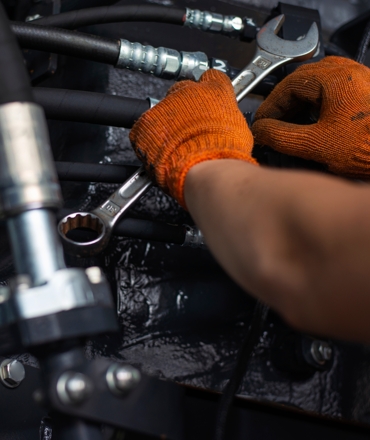

- Adhering to safety, health, and environmental rules and regulations
- Operating and monitoring a machine
- Interpreting machine operation and maintenance documentation and technical drawings
- Performing machine maintenance procedures, preventative maintenance, and predictive maintenance
- Selecting and safely using of proper hand tool for a task
- Moving, handling, and storing materials and equipment
- Selecting systems troubleshooting methods
Learning systems that can add hands-on skills to Duty Area 1 topics include:
- Adhering to mechanical power transmission safety rules
- Using dimensional measuring tools
- Installing and aligning shaft couplings, belt drives, chain drives, gear drives, and pillow block bearings
- Identifying lubrication points, selecting lubricant, and applying lubricant to a machine
- Troubleshooting power transmissions
Learning systems that can add hands-on skills to Duty Area 2 topics include:
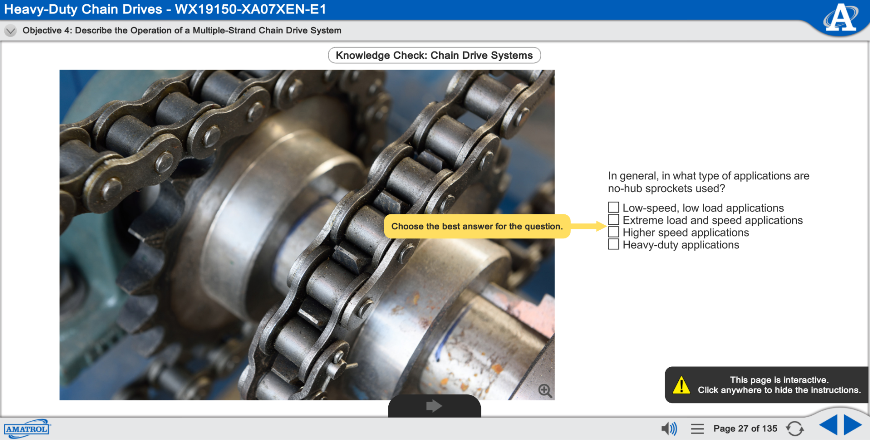
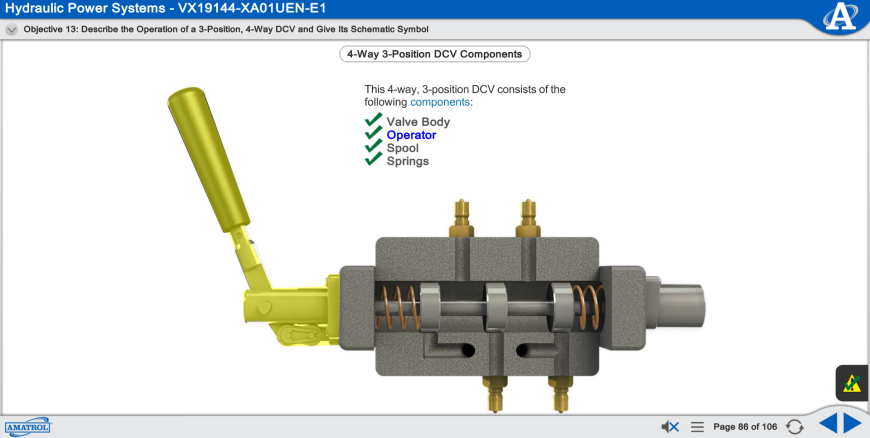
- Adhering to fluid power systems safety rules
- Interpreting basic fluid power schematics
- Starting up and shutting down a hydraulic system and adjusting system pressure
- Adjusting hydraulic actuator speed using a flow control valve
- Servicing hydraulic fluid and a hydraulic filter
- Installing hydraulic conductors and installing and testing components in a basic hydraulic circuit
- Troubleshooting a basic hydraulic circuit
Learning systems that can add hands-on skills to Duty Area 3 topics include:
- Adhering to fluid power systems safety rules
- Adjusting pneumatic system branch operating pressure using a regulator and pneumatic actuator speed using a flow control valve
- Servicing a pneumatic filter and pneumatic lubricator
- Installing pneumatic conductors
- Starting up and shutting down a reciprocating air compressor and adjusting operating pressure
- Installing and testing components in pneumatic circuits
Learning systems that can add hands-on skills to Duty Area 4 topics include:
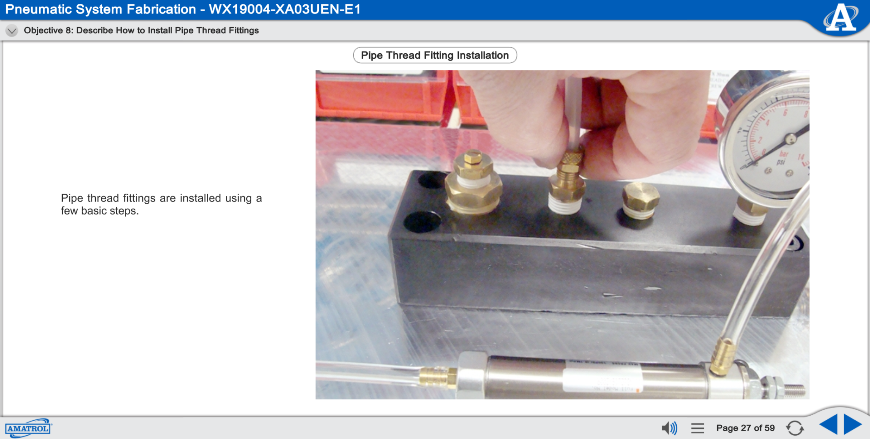

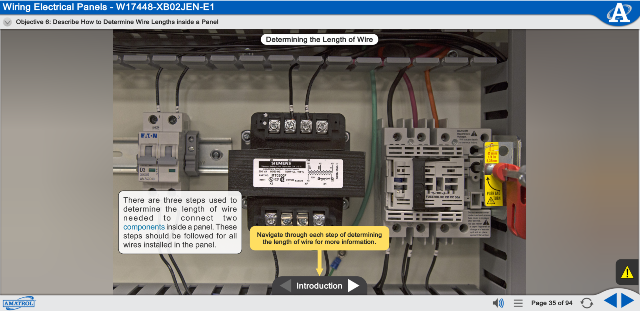
- Adhering to electrical power and control systems safety rules
- Interpreting electrical control and power schematics
- Adjusting limit switches and electronic sensors
- Measuring voltage, current, and resistance in an electrical circuit
- Selecting, installing, and testing fuses and circuit breakers
- Installing and testing AC and DC electric motors, electrical relay control components and circuits, and electro-fluid power components and circuits
- Testing and repairing a machine’s electrical ground
- Troubleshooting an electrical motor relay control circuit and a solenoid-operated fluid power relay control circuit
- Replacing electrical control wiring using terminal and solder attachments
- Testing and replacing transformers
Learning systems that can add hands-on skills to Duty Area 5 topics include:
- Adhering to electronic and control systems safety rules
- Connecting and testing a DC power supply
- Installing and testing a solid-state relay, analog electronic sensors, and basic PLC components
- Installing and operating and AC variable frequency drive
- Transferring programs to programmable controller using a PC
- Creating a basic PLC ladder-style program
- Troubleshooting PLC and controlled components
Learning systems that can add hands-on skills to Duty Area 6 topics include:
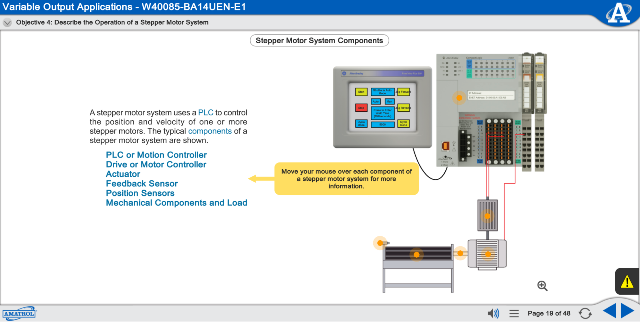

- Adhering to process control systems safety rules
- Reading and interpreting process control documentation
- Calibrating and testing analog sensors and final control elements
- Installing and operating a basic controller
Learning systems that can add hands-on skills to Duty Area 7 topics include:
Duty Area 8: Maintenance Welding (7 eLearning Modules)
- Adhering to welding safety rules
- Using an acetylene torch
- Explaining welding theory, equipment, and selection process
- Preparing parts to be welded
- Using a SMAW Welder to make basic welds on flat stock
- Inspecting welds
- Using a plasma cutter to cut flat stock
Learning systems that can add hands-on skills to Duty Area 8 topics include:
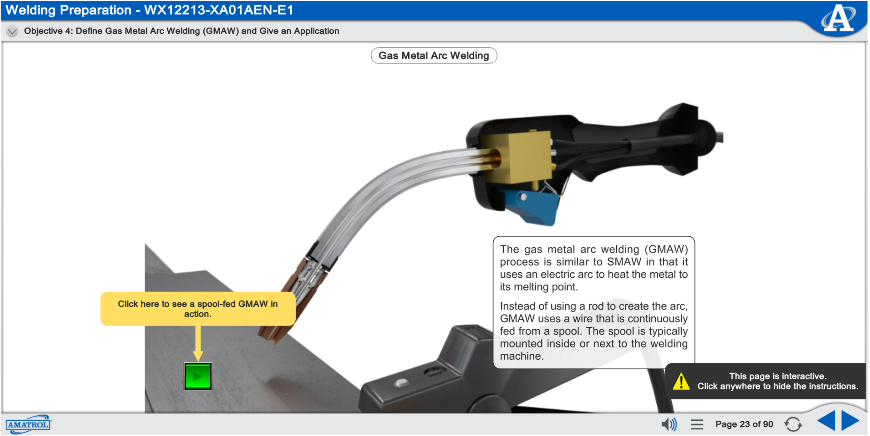

- Adhering to piping system safety rules
- Interpreting basic piping schematics
- Identifying and selecting correct material
- Measuring and preparing material
- Installing piping systems
Learning systems that can add hands-on skills to Duty Area 9 topics include:

